Ambrosia eriocentra, Woolly Bursage
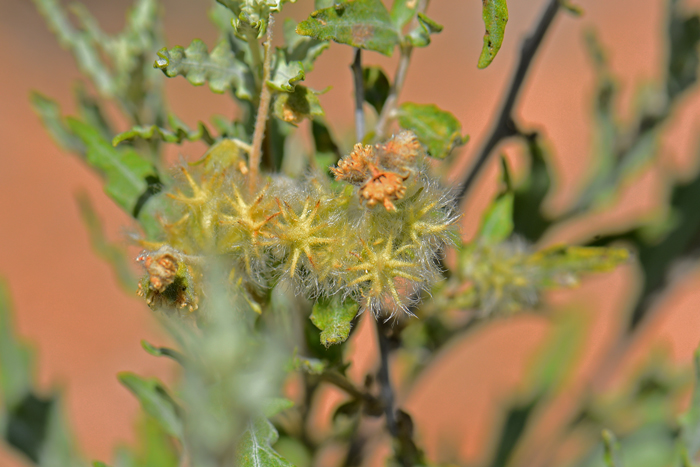
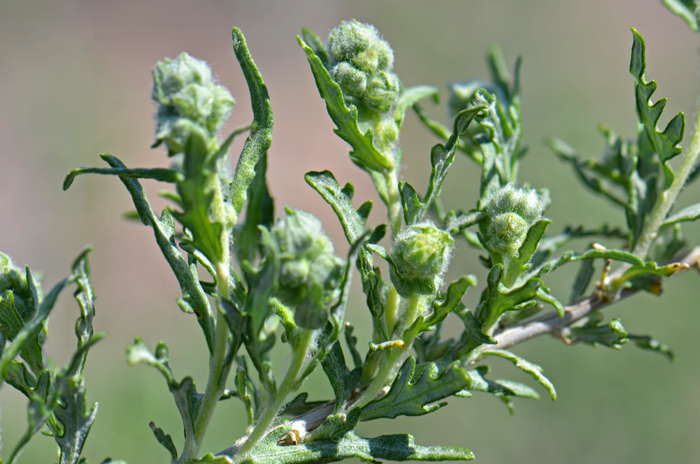
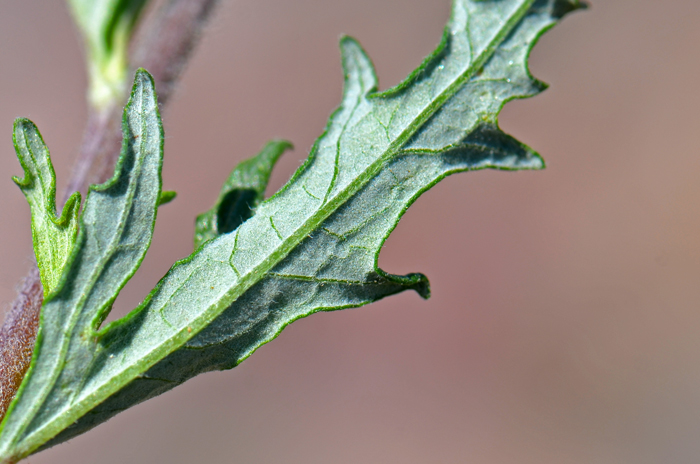
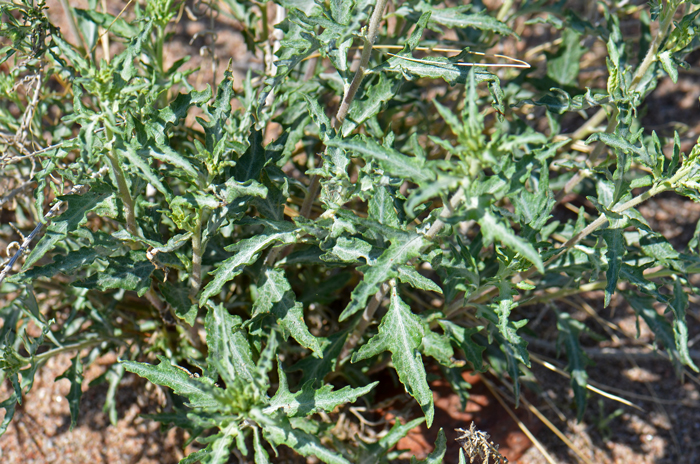
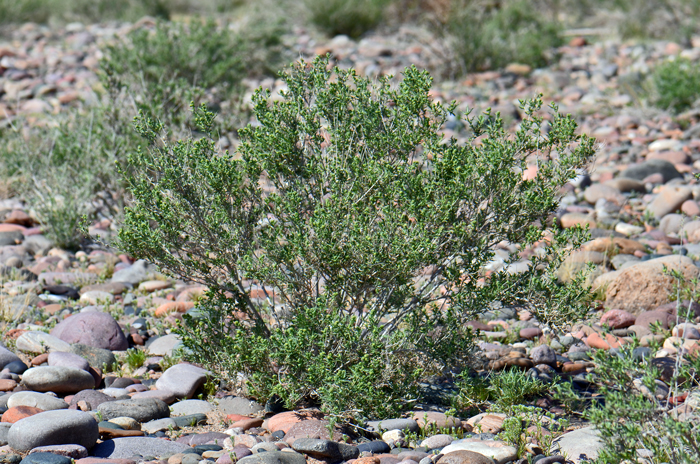
Scientific Name: Ambrosia eriocentra
Common Name: Hollyleaf Bursage
Also Called: Woolly Bursage, Woolly Fruit Bur Ragweed
Family: Asteraceae, Sunflower Family
Synonyms: (Franseria eriocentra)
Status: Native
Duration: Perennial.
Size: Up to 4.9 feet (1.5 m) or more
Growth Form: Shrub; erect rounded plants; woody branches, stems brownish gray, young twigs coated in light woolly fibers, older branches are hair-less (glabrous).
Leaves: Greenish-gray to white; leaves mostly without a blade stalk (sessile) or with short blade stalk (petiole); blade shape variable, lanceolate to lance-linear or pinnately lobed; leaf edges or margins with rolled lobes or toothed edges.
Flower Color: Greenish to yellowish-green, inconspicuous, male (staminate) flowers and female (pistillate) flowers proximal to each other on flowering stalk (inflorescence); fruit is a green burr (cypsela) with long-soft silky white hairs and hairy-tufted sharp spines.
Flowering Season: April to May, June or July
Elevation: 1,500 to 5,000 feet (450-1,500 m)
Habitat Preferences: Desert and pinyon-juniper habitats, sandy soils and dry desert washes.
Recorded Range: In the United States in AZ, CA, NV and UT. In Arizona Hollyleaf Bursage is found in the central and northwestern parts of the state.
North America & US County Distribution Map for Ambrosia eriocentra.
North America species range map for Ambrosia eriocentra:
North American range map courtesy of Virginia Tech, Dept. of Forest Resources & Environmental Conservation
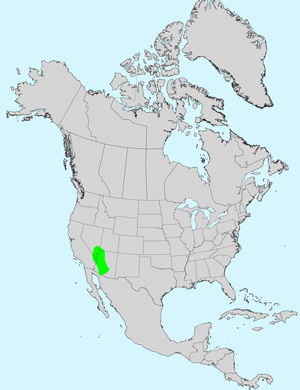
U.S. Weed Information: Unknown
Invasive/Noxious Weed Information: Unknown
Wetland Indicator: Unknown
Threatened/Endangered Information: Unknown
The genus Ambrosia was published by Carl Linnaeus in 1753.
In the Southwestern United States: Arizona has 15 species of genus, California has 14 species, Nevada and New Mexico each have 8 species, Texas and Utah each have 10 species. Data includes Hymenoclea. All data approximate and subject to revision.
Comments: Hollyleaf Bursage is a Mojave Desert species, common where found in Arizona. It has a similar distribution to White Bursage Ambrosia dumosa a close relative that is also primarily a Mojave Desert species.
Also see in Southwest Desert Flora; Canyon Ragweed, Ambrosia ambrosioides, Triangle-leaf Bursage, Ambrosia deltoidea, White Bursage Ambrosia dumosa, Burrobush, Ambrosia monogyra and Cheesebush, Ambrosia salsola.
It is one of several Ragweed species whose pollen causes severe hay fever and allergies in some people. This species thrives in alkaline soil and has the ability to withstand very high surface temperatures for extended periods and often looks lifeless.
The species epithet "eriocentra" (eriocen'tra:) from the Greek words for "woolly" and "center, a point, spur" references to several of the species characteristics.

